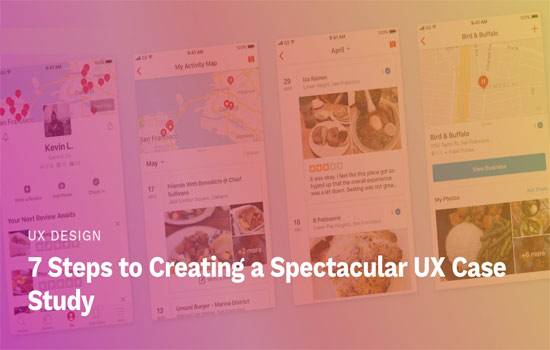
As far as creativity is concerned, UX (User Experience) design remains critical creating job title that brings career satisfaction while still being one of the hottest jobs with a projection for substantial growth over the next decade. So, we can’t be surprised to hear a lot of people are asking how to become a UX designer.
One important caveat that any UX learner needs to understand is that the path itself is yet to be well-defined. Lack of clarification exists regarding the specific skills one must learn. More surprising, few people even including the leaders can tell you exactly how things are going to be for you in the coming days.
However, the annual salary around $70k to $145k (Indeed, PayScale, and Glassdoor) enlivens the spirits of candidates to invest their energy and time to master the discipline. In this article, you’ll learn how to be a UX professional; no matter if you don’t have an art/design background.
How to Become a UX Designer? 9 Steps
Starting with the definition of UX plus the duties of a UX designer, you’ll be getting familiar with the education, essential skills, and tools. And finally, a few recommendations to break into the real world of opportunities.
Learning Graphic Design
Although you’re not going to call yourself a graphic designer in the end, this is the start point every aspiring UX designer should make. You’ll be learning the principles of LINE, COLOR, SHAPE, SPACE, TEXTURE, TYPOGRAPHY, SIZE, BALANCE and HARMONY, DOMINANCE and EMPHASIS.
The number of tools involved in this particular area isn’t small. The most popular ones include some of the Adobe’s best like Photoshop, Illustrator, In Design, Fireworks, and Dreamweaver. Each of these programs are so varied and powerful in terms of their embedded functionalities that they take at least a year for beginners to master the basics only.
Don’t attempt to go for everything because you may end up learning nothing. It’s good to start with Photoshop and then Illustrator. After being conversant with them, you may proceed with another or whatever you’ve already learned about the first two should be enough to get you started.
Check Related Article :
Understanding Key UX Principles and Learning Wireframing and Mockups
Many principles govern the world of UX but none like these five.
Hierarchy
Information architecture (how to organize the content across an app or website) and Visual Hierarchy (content stands out differently based on their importance) are the major sections.

Consistency
Identifying and applying the standard patterns for the different elements of an app or site becomes important. Users should be allowed to experience things based on something they did in the past.
Confirmation
Users cannot be let to suffer for an accidental action like deletion or removal of something. A confirmation process should be in order before any actionable phase is completed.
User Control
It means users should be able to have some level of control over how they’re interacting with a part of the app or site. It’s a very important part of users’ overall experience.
Accessibility
All users don’t have the same level of understanding of how an application or website works. Everyone who is intended should be able to use the product or website as they’re expected. That’s the key here.
These principles lead you to learn a crucial part of UX design called Wireframing and Mockups. It teaches you how to create simple visuals for expressing ideas. You have to master the art of distilling the requirements and important conversations into the wireframes. Here’s a list of some great wireframing tools to learn.
- UXPin (Collaboration, Design, Wireframing, Prototyping, and User testing)
- Sketch (Interface design and Wireframing)
- Axure (Wireframing and Prototyping) (A good alternative can be Justinmind)
- OmniGraffle (A perfect tool for only wireframing) (A powerful alternative can be Balsamiq)
The list may seem overwhelming, but you can start by learning any of them, especially the one that focuses more on wireframing.
Learning Prototyping
A wireframe or mockup is enough to communicate your design ideas. What if your future jobs require the demonstration of interactions or app-like user experiences? Prototyping becomes relevant here, although it’s not an all-time necessity.
It requires an ideal learner to have some front-end skills like HTML, CSS, JavaScript, and jQuery. Your codes need not be organized like those of a pro, but some working knowledge would be a plus.
After you’ve armed yourself with the hands-on experience in design and wireframing using some of the above tools, you should focus on enriching yourself with the following skills. You may already have acquired skills in some of these, and thus, they may be repetitive, but these skills will make you an ideal fit for a real job.
Learning More Tools
Since UX design incorporates research and testing in its core, you should go ahead knowing how to use Lookback, UserTesting, Eyequant, Hoitjar, etc. Knowledge about UserTesting makes an excellent addition to your vault.
Being able to access the analytics and analyze them for better design decisions is one of the advanced stages of the job. There’re several tools for this too, but Google Analytics is a good choice.
Acquiring UX Designer Skills
Although no clear consensus is in hand, a broad skillset that incorporates design, business, individual and interpersonal skills is desirable. Without understanding what’s needed, you can’t really move along the way.
Design Aptitude and Skills
- Ability to create user personas, stories/storyboards, sitemaps, wireframes, and prototypes
- Capability of planning and conducting user surveys and testing with formal evaluations
- Familiarity with the principles of interaction design
- Understanding of information architecture
- Proficiency in different design applications/tools (e.g. Sketch, InVision, Adobe InDesign, Illustrator, UXPin, etc.)
- Fundamentals of front-end development such as HTML/CSS, Bootstrap, JavaScript is a plus
Business Sense
- Specialization in translating data, objectives, and goals of a business into desired digital experiences
- Knowledge of common business metrics and the influence of design upon business performance
- Collaboration with cross-departmental groups/teams
- Strong project and time management skills
- Readiness to plan and organize UX workshops to make it a company culture
- Clear Communication and Strong Presentation skills
- Ability to disseminate design decisions articulately.
Individual and Interpersonal Skills
- Verbal and written aptitude
- Can-do attitude and tenacity
- Adaptability and flexibility
- Respect toward others’ feelings
- Cooperation and teamwork
- Problem-solving talents
But, how can you keep abreast of all these? Well, here’s another great tip.
Becoming a Regular Reader
There’re nearly three dozens of websites, blogs, and online sources that offer news, tips, guidelines, research results, surveys on user experience, etc. Some of the finest places can be Smashing Magazine, A List Apart, Nielsen Norman Group, Boxes and Arrows, etc.
You don’t have to read each page of these blogs/websites, but knowing their insights and guidance will help you become a knowledgeable UX designer who can take on tomorrow’s challenge.
At this stage, you may already have started looking for a job that gives you the chance to use what you’ve in your head. Why should you not do this? But, you have one more thing to notice; that’s the job responsibilities of a UX designer.
Understanding UX Design and Responsibilities
Users have certain interactions with a product or a service. UX refers to any of these. A standard design is the one that considers all elements that shape the experience of users in terms of ease, efficiency, and flexibility while doing what they intend to.
So, a UX design professional is expected to handle the following responsibilities.
- Comprehending product specs and the psychology of its target consumers
- Running conceptual analysis along with usability testing and collect feedback
- Creating personas by conducting user research and analyzing data
- Defining a standard model of interaction and prepare an evaluation of its success
- Creating wireframes plus prototypes based on customer needs
- Providing creative and efficient ways to solve various UX problems like accessibility/findability, usability
- Collaborating with UI designers and help implement appealing designs
- Communicating ideas for design and prototypes to team members (e.g. developers, programmers)
- Staying updated with the competition and industry trends
Meeting Fellow Designers and Industry experts
As we’ve access to several social media and forums, it shouldn’t be a trouble for you to connect with a few likeminded individuals including those who are already in the job and the ones who are just like you.
Try to increase your interactions with them. Engage yourself in contests and contributory campaigns. These actions may/may not pay you, but the exposure they would bring you can be an asset for your future.
Building a Portfolio and Applying for Jobs
Being capable of doing a job that pays is the ultimate part of your education on how to become a UX designer. But, how do you start?
- Create a website or have one created by a developer. But, don’t rely on anyone else for the design.
- Prepare a creative yet professional resume that showcases all your skills. You may not have an officially recognizable one, but by the time, you’ve been here, you must have done something to show.
- You may sign up for different websites and marketplaces for freelance opportunities or apply for jobs announced by different agencies.
- Prepare yourself for interviews, both online and practical. It won’t be too late for you if you’ve mastered everything discussed in this article.
Welcome to the world of creative talents and smart individuals now that you have managed to make yourself adequately resourceful for a full time or part-time job! Please feel free to ask questions regarding how to become a UX designer or anything that falls into this category.






